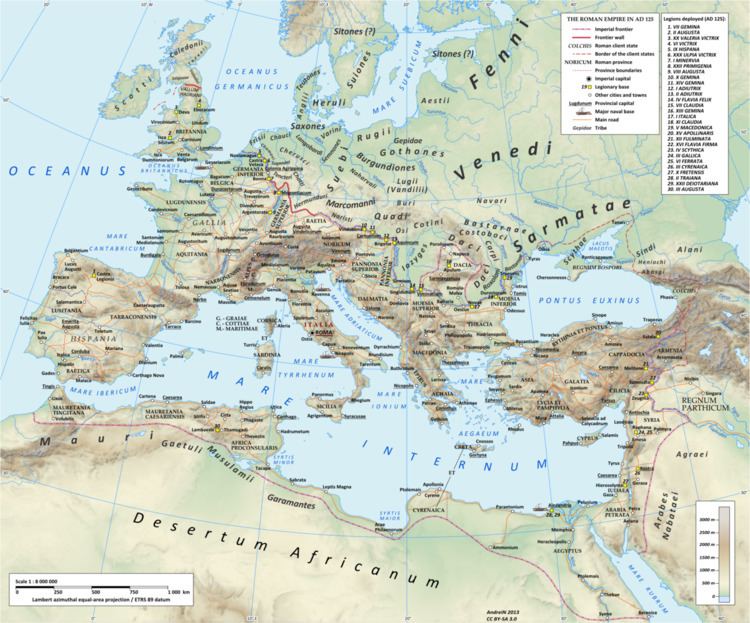 | ||
Legio septima Claudia (Claudius' Seventh Legion) was a legion of the Imperial Roman army. Its emblem, like that of all Caesar's legions, was the bull, together with the lion.
The Seventh, the Sixth, the Eighth and the Ninth were all founded by Pompey in Spain in 65 BC. With the Eighth, Ninth, and Tenth legions, the Seventh was among the oldest units in the imperial Roman army. They were ordered to Cisalpine Gaul around 58 BC by Julius Caesar, and marched with him throughout the entire Gallic Wars. The Roman commander mentions the Seventh in his account of the battle against the Nervians, and it seems that it was employed during the expedition through western Gaul led by Caesar's deputy Crassus. In 56, the Seventh was present during the Venetic campaign. During the crisis caused by Vercingetorix, it fought in the neighborhood of Lutetia; it must have been active at Alesia and it was certainly involved in the mopping-up operations among the Bellovaci.
Legio VII was one of the two legions used in Caesar's invasions of Britain, and played a crucial role in the Battle of Pharsalus in 48 BC, and it existed at least until the end of the 4th century, guarding the middle Danube.
Tiberius Claudius Maximus, the Roman soldier who brought the head of Decebalus to the emperor Trajan, was serving in Legio VII Claudia. An inscription in Pompeii revealed that Floronius served in the seventh legion. The inscription says,'“Floronius, privileged soldier of the 7th legion, was here. The women did not know of his presence. Only six women came to know, too few for such a stallion.”'
